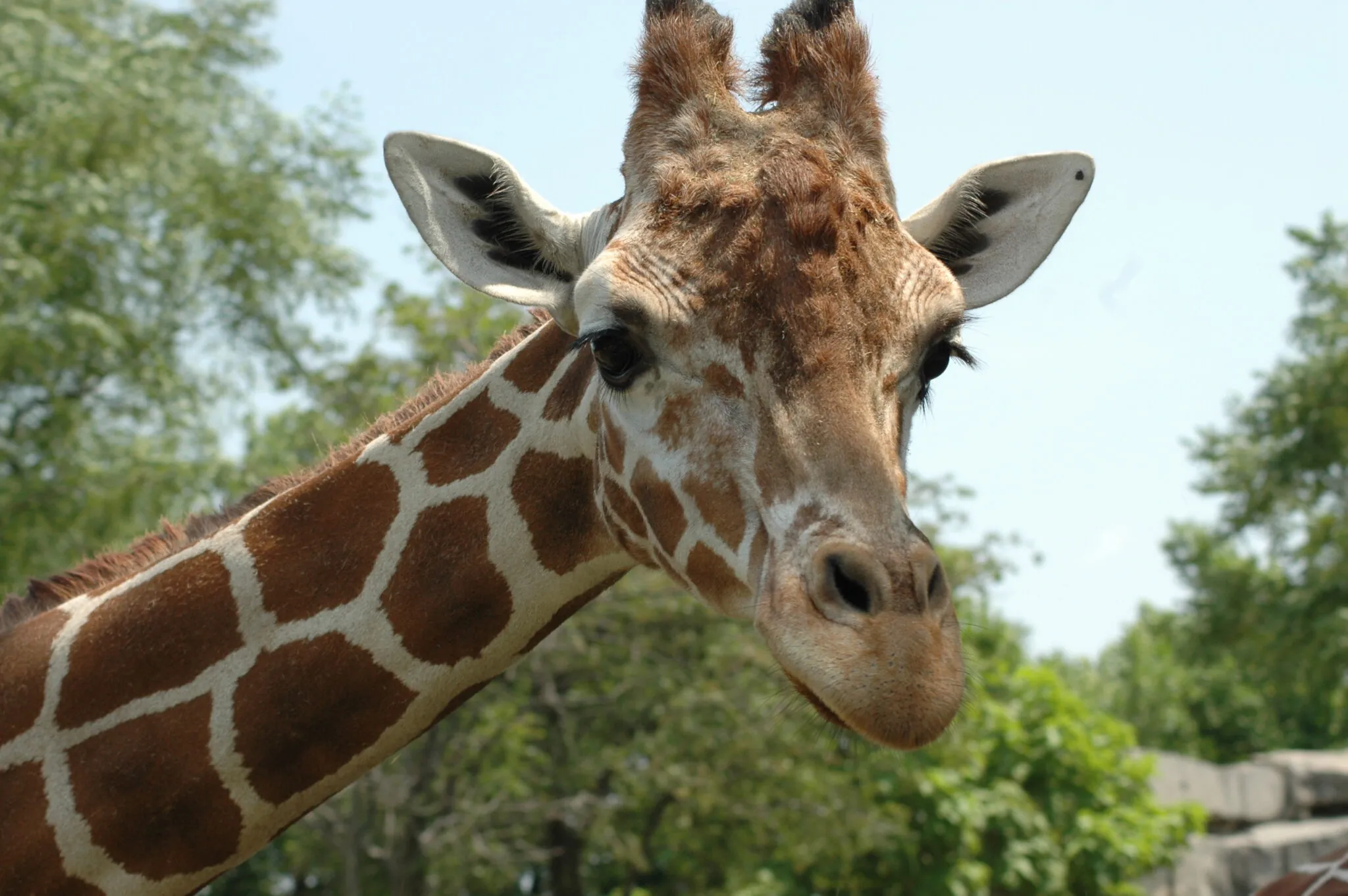-
Menu
- Plan Your Visit
- Meet The Animals
- Check Out Events
- Memberships
- About The Zoo
- Support the Zoo
- Conservation
- Education
- Groups & Private Events
- Zoo News
- Contact
- Indianapolis Prize
- Global Center for Species Survival
- Schedule
- Donate
- Membership
- Tickets

- Plan Your Visit
- Meet The Animals
- Check Out Events
- Memberships
- About The Zoo
- Support the Zoo
- Conservation
- Education
- Groups & Private Events
- Zoo News
- Contact
- Indianapolis Prize
- Global Center for Species Survival

Reticulated Giraffe
Giraffa camelopardalis reticulata
About
The rest of the animal kingdom really looks up to giraffes—they’re the world’s tallest land mammal! Like humans, they have seven vertebrae in their neck, but they’re larger than ours. That long neck helps them see across their savanna habitat and eat leaves from trees.
Giraffes live in herds, where males may battle it out for dominance and access to females by swinging their necks into each other. Giraffes are always on watch for danger as they eat. They sleep only a few hours a day. If threatened, they can run up to 35 miles per hour for a short distance!
Females in the herd give birth to a single calf after more than a year of gestation. New giraffe calves are about 6 feet tall, weigh more than 100 pounds and can stand and walk in their first hour. Calves nurse from mom for up to 16 months, but they’re cared for by their mothers and other females in the herd as a group. Their horns, called “ossicones,” are soft cartilage at birth and harden to bone over time. Each giraffe has a unique coat pattern, which helps camouflage them among the grasses and trees.

Conservation
Reticulated giraffes are vulnerable to extinction, and their populations are shrinking. They face threats from habitat loss, poaching and climate change.
Some areas of the African savanna are facing more droughts from climate change, which reduces the amount of habitat for wildlife. To help combat climate change, the Indianapolis Zoo participates in AES’s Green Power Offset Program. Indianapolis residents also can help offset carbon that they’re burning in fossil fuels through this program.
The Zoo also partners with other groups to support the conservation of large African mammals and help people live alongside wildlife through the Tanzania Conservation Research Program.
Feed a Giraffe
Animal Amigos
WHERE ARE THEY AT THE ZOO?

